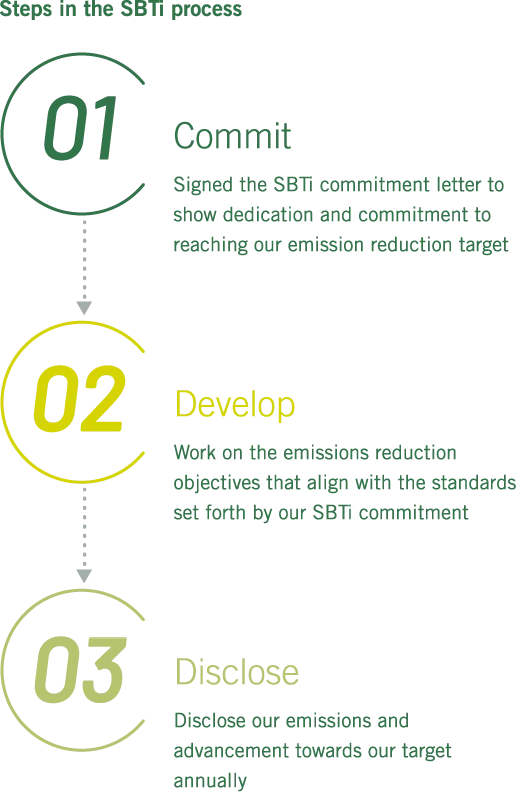In line with the Paris Agreement’s objective to limit global warming to 1.5 degrees Celsius, above pre-industrial levels, TTI has set out to reduce our GHG emissions. To achieve this goal, we adhere to standard best practice guidelines and methodologies. This includes making a commitment to the Science-Based Targets initiative, as well as planning out our future steps to bolster our objectives and implement a robust action plan.
SBTi Update
The Science-Based Targets initiative (SBTi) was established by the Intergovernmental Panel on Climate Change (IPCC) in 2015 to help companies set GHG emission reduction targets in line with climate science and the Paris Agreement goals. In setting these targets, companies commit to take action against climate change, contributing to decarbonization and increasing their competitiveness in the shift to a net-zero economy. On March 24, 2023, TTI officially signed the SBTi commitment letter, joining the ranks of over 1,200 other companies worldwide, who are leading the transition. Our next step is to set incremental targets to demonstrate our alignment with the global shift towards decarbonization.
As an integral part of our decarbonization strategy, we have reviewed our Scope 1 and 2 emissions. Scope 1 emissions encompass those originating from our onsite operations and company-operated vehicles, while Scope 2 emissions result indirectly from the electricity we purchase. We have independently verified our Scope 1 and Scope 2 emissions for 2021, our baseline year, and moving forward, will be verifying these emissions each year.
In 2023, we formulated short, medium, and long-term goals that outline specific measures to achieve a 60% reduction in Scope 1 and 2 GHG emissions by 2030, in comparison to our 2021 baseline. Our primary short-term focus centers on implementing a green energy procurement strategy. In the medium term, our central objective is developing on-site solar energy, which we have already begun to implement in our China operations. Looking ahead, we plan to incorporate onsite renewable energy generation and energy recapture measures.
Currently, we are mapping our Scope 3 emissions and anticipate sharing the results by 2025. Upon completion, we will establish reduction targets for our most material emission categories.
We anticipate reaching our peak Scope 1 and Scope 2 emissions in the medium term as we continue consolidating our globe manufacturing and distribution footprint. Once we cross this peak and complete the consolidation process, we foresee consistent reductions, bringing us closer than ever to our GHG emissions reduction target. Initiatives such as our green energy procurement, fleet decarbonization, and onsite renewable energy implementation are the means behind our efforts to reach our goal.


